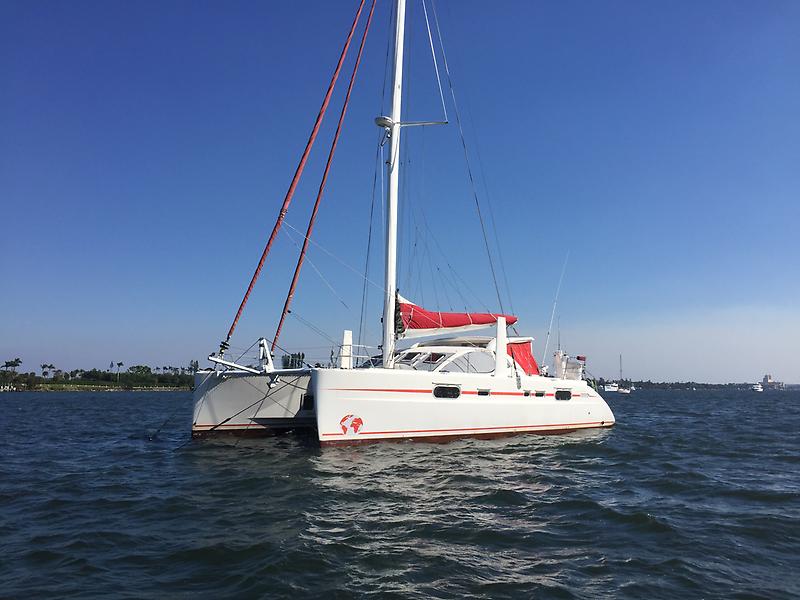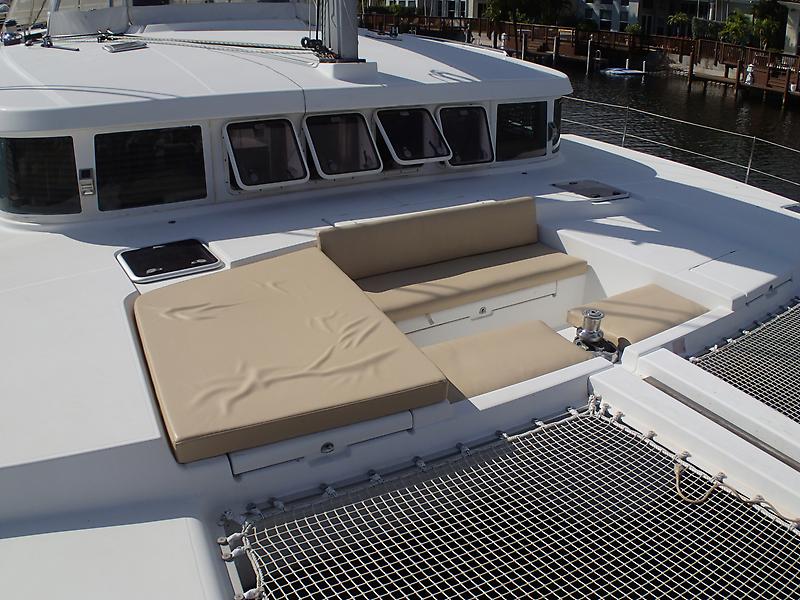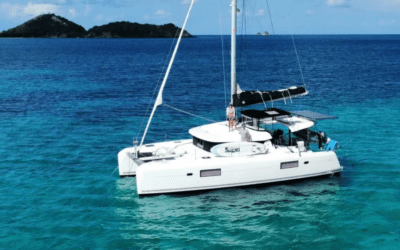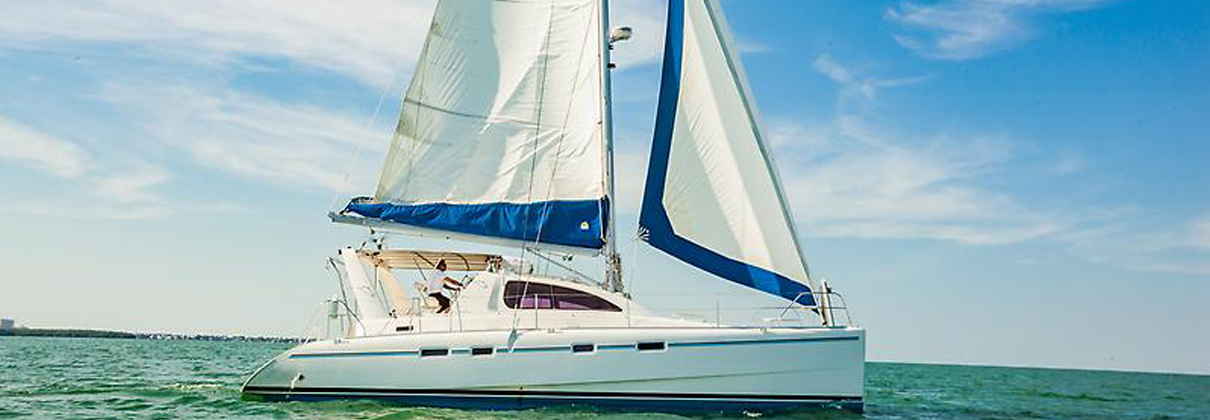
Inspecting A Used Catamaran [Best Practices]
You’re finally ready to view firsthand the Catamaran of your dreams after months of shopping with your broker, and educating yourself on the market and the models.
But what should you be looking for? How can you properly gauge the condition of a used Catamaran?
First things first: What is your first impression of the boat? First inspections can be tricky, so you will want to take note of the basics right away. How does she feel to you? Try to get a feeling for whether the boat would work for you based on layout, features, amenities, etc. Then, try to figure out what will have to be done to make her even more usable.
Once you have gotten your initial impressions on the boat, you will want to look at her more closely throughout. Are there major items that might be wrong with the boat? Are there cracks, water incursions, oil spills of note?
As this process is a long and tedious one, you will want to make sure that you take a lot of photos and notes to review later. Fifty photos should be the minimum amount you bring home after inspecting a boat. Never take for granted that you will remember something after a showing, as during the process you will look at a lot of boats and forget a lot of the details of the boats you may have visited.
Below is a useful guide to follow for potential buyers who are looking at a used Catamaran:
Exterior
- Rub a finger on a white surface. Is it chalky? Is there any shine? Are there lots of scratches?
- Look for evidence of repairs, indentations, cracks throughout the entire boat.
- Inspect the bows. Is there evidence of collision?
- Look at the trailing edge of the transoms. Is this area beat up? Most have had repairs. Are the repairs ok?
- Check the condition of the rub rail.
- Does the boat float on its lines? Look for whether the boat is bow heavy, stern heavy, or even.
- Take a close look at these three load-bearing areas. Look at the base of the mast, and any evidence of compression. Look at the steering bulkhead for any evidence of malformation. Look at the chainplates for cracks, compression or looseness. These three areas can potentially be the source of major issues to the boat’s structure.
Deck
- Assess all the surface cracks on the decks.
- Particularly around the hatches, look for areas where water incursion may have happened. If you see evidence on the outside, be sure to look carefully on the inside of the boat for signs of water.
- Without a moisture meter, there is no real way of knowing if there is water in the core. However, look for any soft spots, blisters, rises.
- Leaks commonly occur around hatches, winches, cleats, padeyes, etc.
- Look at all hardware, and determine if it is serviceable, or if it may need replacement.
- Make sure all lockers and lazarettes open and close.
- In your mind, make an assessment as to whether you could live with the look and condition of the decks, or what would be needed.
- Obviously, look at all teak, varnish work, etc, and determine what condition it is in as well
Interior
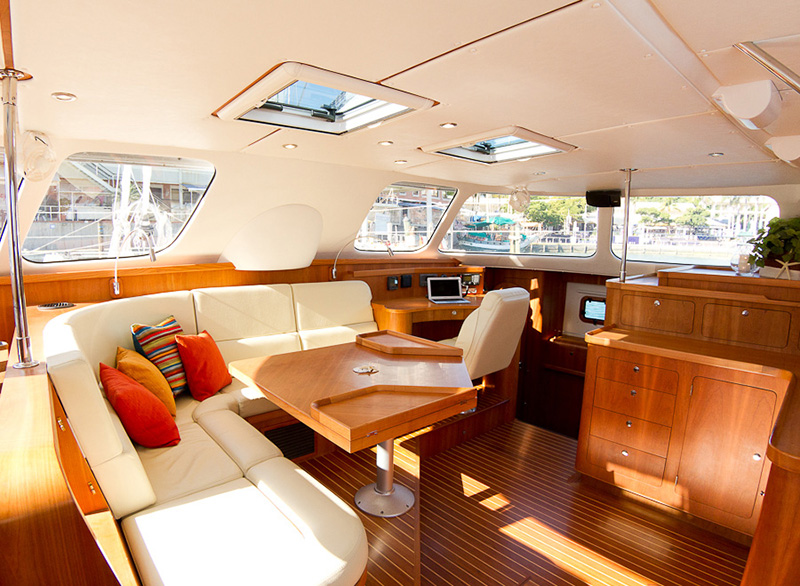
- Is it clean?
- Can you see any signs of water damage? If yes, can you determine where it happened? Is it something you can live with, or does it need to be fixed?
- Examine all headliners. Is there is any water damage evidence? Is there also smell? Mildew is a major problem in a wet interior.
- Floorboards. Is the floor in good condition? Walk everywhere. Is the floor spongy at all? This may be a sign of rotting bracing beneath the floor.
- Inspect all sinks, fixtures, light fixtures, switches. Make notes of the ones that look to be beyond service.
- Turn on and off as many things as you can.
- Try to picture living in this boat. As it is, how would that be? What HAS to be done?
Galley
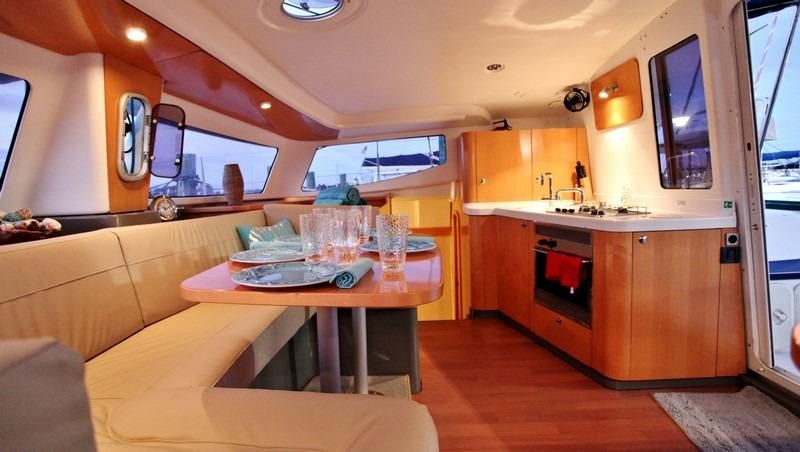
- Stove and Oven condition. Do they work
- Refrigeration. Does it work? Is it on now? Is it loud?
- Storage. Is there clean, dry storage for food? Look in the cabinets and be sure.
- Is there a propane shut off switch in the galley?
- Are the sinks well sealed? Have they been caulked before?
- Are the fixtures ok?
- Go through the galley slowly, and imagine cooking a meal there. Would it work for you?
Heads
- Determine if the heads work, that they are serviceable. Same with showers, etc.
- Make sure showers drain. Determine where they drain to.
Engines, Wiring, Panels, Batteries, Connections
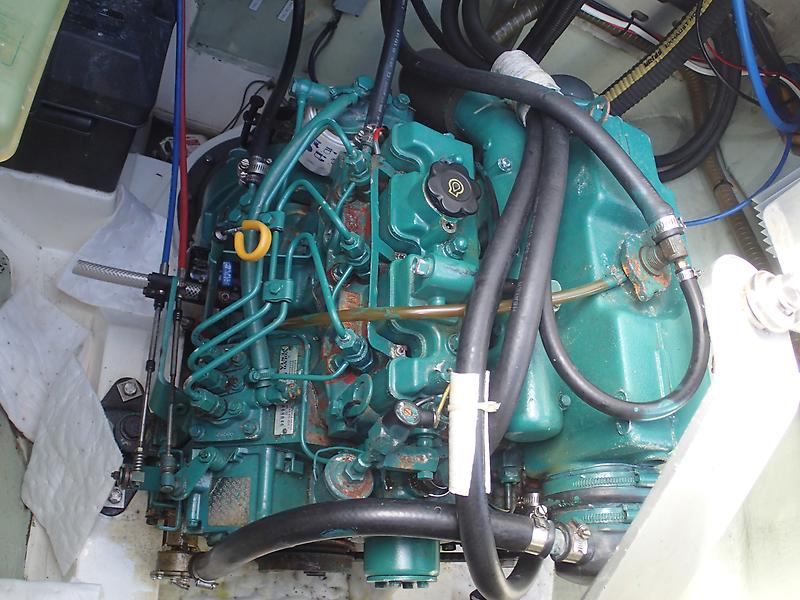
- Most people get tired or bored after a while when inspecting a boat. You need to stay on it, look at the wiring, look in bilges, look at the engines, and batteries. Be on the lookout for a lot of water or oil, general condition., How a boat has been cared for will make a difference to how it will act going forward. Open floorboards. Be sure bilge pumps are installed. If the bilges are dry, you can assume they work ok.
- In the engine compartments, look for oily bilges. Look at the paint on the engines. Look at the insulation. Look at wiring. Is it wire tied back? Is there any corrosion anywhere that concerns you. If possible, start the engines. Do they start right up? What color is the smoke? Is there good water flow out the exhaust?
- If possible, pull a dip stick. What is the level? Is the oil clean? Does it smell weird?
- How are the belts? Wiring on the alternators? Are the strainers clean?
- Try to make a determination in your mind. Are the engines serviceable? What is worrisome?
Sails and rigging

- Ask if you can pull out or up a couple of feet of the main and jib. Look at stitching, the condition of the cloth, etc. You probably can’t ask for a full hoist, but this will help.
- Look at every swage fitting you can, shrouds, etc. If anything looks improper at all, make a note of it.
- Check all halyards, sheets, travelers, etc. What is the condition of the line?
Miscellaneous
- Check the dingy
- Check stanchions and lifelines
- Check the windlass, anchors, rodes, etc
- Check electronics if possible
Speak with Derek Escher to help you find the right catamaran for you.

Derek Escher
Licensed + Bonded Catamaran Broker
Email: Derek@JustCatamarans.net
Mobile: (617) 803-8976
Office: (954) 589-2343

